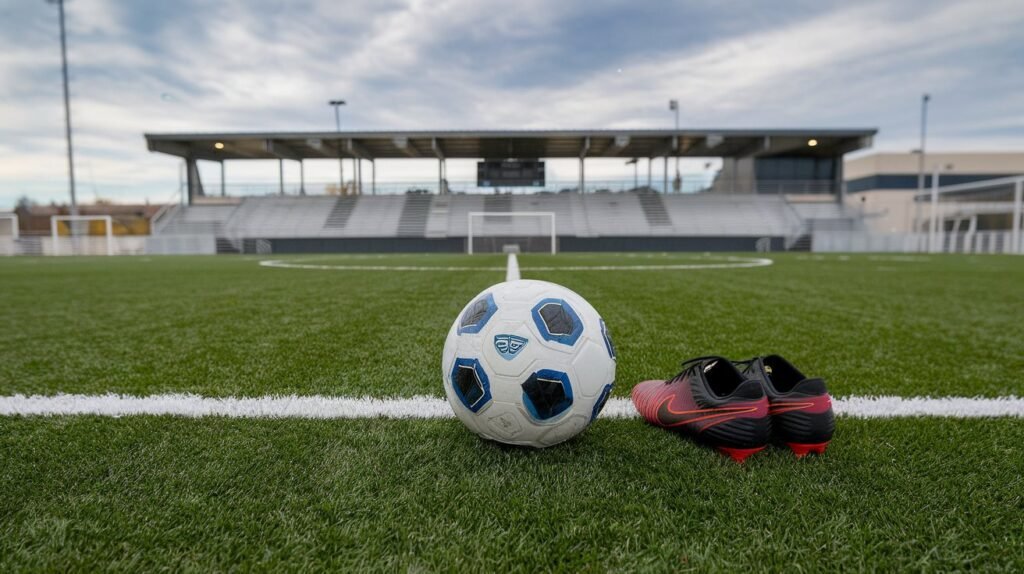
The Role of Infrastructure in Enhancing Athlete Performance: The Impact of Artificial Turfs and Modern Facilities
In the world of sports, the phrase “performance is everything” isn’t just a catchy slogan; it reflects the reality that every aspect of an athlete’s environment can influence their capabilities on the field. One critical component often overlooked is the infrastructure in which athletes train and compete. Well-designed facilities, particularly the use of advanced artificial turfs, play a pivotal role in optimizing athletic performance. This blog delves into how modern infrastructure, focusing on artificial turfs, is revolutionizing the way athletes train and perform.
Artificial Turfs: A Game-Changer in Athletic Facilities
Among the various advancements in sports infrastructure, artificial turfs have emerged as a revolutionary development. Traditionally, natural grass was the standard playing surface, but artificial turfs have gained prominence due to their numerous advantages.
1. Consistency and Reliability
One of the most significant benefits of artificial turf is its consistency. Unlike natural grass, which can become uneven and worn down, artificial turf offers a uniform playing surface throughout the year. This consistency is crucial for athletes who need to practice and compete on a reliable surface. It helps in maintaining a stable footing, reducing the risk of unexpected injuries caused by uneven ground.
2. Durability and Maintenance
Artificial turfs are designed to withstand heavy use without deteriorating. They are less affected by weather conditions, making them suitable for all seasons. This durability reduces maintenance costs and ensures that athletes always have access to high-quality playing surfaces. Natural grass fields, on the other hand, require regular upkeep, including mowing, watering, and re-sodding, which can be both time-consuming and expensive.
3. Enhanced Performance
Modern artificial turfs are engineered to mimic the characteristics of natural grass, providing a surface that supports optimal athletic performance. Innovations in turf technology, such as improved shock absorption and traction control, help in reducing the impact on athletes’ joints and muscles. This can lead to better performance and a lower risk of injuries. Additionally, the ability to play on a consistent surface can enhance training effectiveness, allowing athletes to focus on skill development and strategy.
4. Injury Prevention
Injury prevention is a top priority in sports, and artificial turfs are designed with this in mind. Advanced turf systems often include shock-absorbing layers that reduce the impact on athletes’ bodies. This feature is particularly beneficial for high-impact sports such as football and soccer, where repetitive strain and contact injuries are common. By minimizing the risk of injuries, artificial turfs contribute to athletes’ long-term health and performance sustainability.
New Practices in Turf Technology
The development of artificial turfs has not stagnated; it continues to evolve with new practices and innovations. Some of the latest advancements include:
-
Infill Technology: Modern artificial turfs use advanced infill materials, such as rubber granules and sand, to enhance the surface’s performance. These materials provide better shock absorption and improve the overall feel of the turf, making it more comfortable for athletes.
-
Heat Management: Newer turf systems incorporate heat management technologies to address the issue of surface temperature. This is crucial in preventing overheating during hot weather, which can affect both performance and safety.
-
Environmental Considerations: There is a growing emphasis on sustainability in turf production. Many manufacturers are focusing on eco-friendly materials and recycling processes to reduce the environmental impact of artificial turfs.
The Importance of Infrastructure in Sports
Infrastructure, encompassing everything from training facilities to playing surfaces, significantly impacts an athlete’s performance. High-quality infrastructure not only ensures safety but also enhances the effectiveness of training regimes. Facilities designed with athletes’ needs in mind can improve performance, reduce injuries, and foster long-term success.
Conclusion
In the competitive world of sports, every advantage counts, and well-designed infrastructure, particularly in the form of artificial turfs, plays a crucial role in enhancing athlete performance. By providing a consistent, durable, and high-performance playing surface, artificial turfs contribute to better training outcomes and reduced injury risks. As technology continues to advance, the integration of these new practices in turf development promises even greater benefits for athletes and sports facilities alike.
Investing in high-quality infrastructure is an investment in athletes’ success. For sports enthusiasts, coaches, and facility managers, understanding the impact of artificial turfs and other modern practices is key to creating environments that foster excellence and longevity in athletic performance.
Whether you’re a sports professional or simply passionate about the game, recognizing the role of cutting-edge infrastructure in enhancing performance can provide valuable insights into the future of sports and training.
